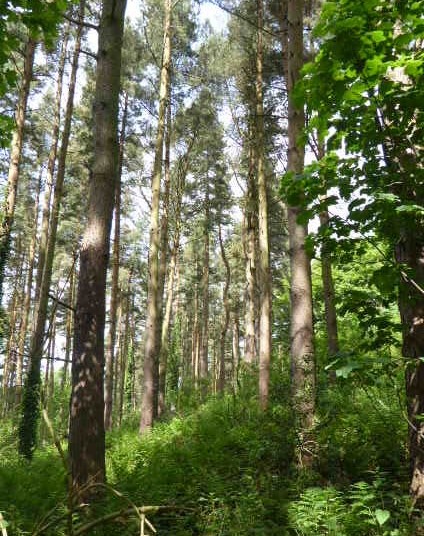Trees: Plantation ancient woodlands restored
Ancient woodlands have existed as tree cover since 1600 (opens new window). They are a rich habitat and home to some of our most threatened wildlife. Some ancient woodland was chopped down and replanted with non-native tree species - ‘plantation ancient woodland’.
There are 919 hectares of plantation ancient woodlands mapped across the Peak District, about 44% of the total amount of ancient woodlands and 6% of all woodlands.
The Woodland Trust has lots of useful guidance (opens new window) on how to restore ancient woodlands. Each wood needs a bespoke plan - there is no one-size-fits-all approach and no set timescale.
# For nature
- Although damaged, these plantations still have the complex soils that formed throughout their lives as woodlands, and may have some of the special plants, animals and fungi too. Restoring ancient woodlands can help recover some of the rich wildlife associated with these unique places.
- Ancient woodlands in the Peak District are often small and fragmented. Restoring plantation ancient woodlands can help make sites bigger and more joined up, allowing wildlife to spread and populations to increase.

# What else can restored ancient woodlands deliver?
- Short-term income from softwood or hardwood timber.
- Long-term income from hardwood timber or wood products created during management.
- Ancient woodlands lock up carbon, in the soil as well as the trees themselves, helping to mitigate climate change.
- Diversifying plantation woodlands can stabilise the soil, preventing run off and improving water quality.
# In practice
- Remove non-native trees and other plants using machinery that will minimise compaction and ground disturbance, not during bird breeding season. This will probably be a gradual process over many years, and may need carefully planned temporary tracks or other access.
- Restoration can be achieved through planting of locally-native species. Natural regeneration of native species can supplement tree numbers.
- Secure and restore ancient woodland remnants on top of the removal of non-native trees.
- Explore opportunities for planting without the use of plastic tree guards.
- Landscape-scale deer management, if necessary, can be an important part of restoration in helping trees to establish, and ongoing management.